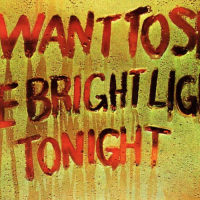It’s difficult, as this plays, to believe that The Beautiful Old focuses on sheet-music favorites from before the advent of electricity. These 19 gusts of folk-tinged turn-of-the-century Americana still hold boundless insights.
Multi-instrumentalist Garth Hudson, of the Band, is the most consistent presence here, showing up 10 different times with an array of guest stars that includes Richard Thompson, Graham Parker, Dave Davies and Eric Bibb, among others. He even handles two of this release’s instrumentals, taking the lead on “The Rosary” from 1898 and joining Gabriel Rhodes and Richard Bowden for the deeply romantic closer “Till We Meet Again,” a relative newcomer from 1918. Hunt Sales, Jimmy LaFave and Will Sexton also sit in for executive producer Paul Marsteller. All are featured on period instruments (from the pump organ to the glass harmonica), something that only adds to this project’s homey authenticity.
[SOMETHING ELSE! INTERVIEW: In a free-form chat, we talked to Garth Hudson about the earliest days of the Band, losing its three vocalists and the wonders of the Lowrey organ.]
Yet, The Beautiful Old (due the first week in June 2013 via Doubloon Records) ultimately sounds far more beautiful than it ever does old, beginning with its opening cut. There perhaps could, of course, be no more apt figure to open The Beautiful Old than Thompson, whose slightly boozy take on “The Band Played On” (a tune that dates to 1895) hearkens back to his own ageless compositions.
Parker’s take on 1867’s “Flying Trapeze” balances a certain Sgt. Pepper-era psychedelia with his own suitably Dylan-ish pose, while Bibb brings a twilit rumination to 1901’s “Just A- Wearyin’ For You.” Rhodes, who also served as music producer for The Beautiful Old, adds to the album’s familial vibe by having his mother Kimmie sing lead on a trio of tracks, and sister Jolie Goodnight take over on two others. Dave Davies, meanwhile, channels his MTV-era Kinks hit “Come Dancing” during a note-perfect dance-hall version of 1892’s “After the Ball.”
But it’s Hudson, the album’s one true common musical thread, who holds everything together — just as he did with the Band — circling the song’s themes, unfurling these billowing asides then working so brilliantly in miniature too, creating this crazy-quilt tapestry of sound that binds all of the voices, and all the themes.
[amazon_enhanced asin=”B00AJLHU3K” container=”” container_class=”” price=”All” background_color=”FFFFFF” link_color=”000000″ text_color=”0000FF” /] [amazon_enhanced asin=”B000BI0WPE” container=”” container_class=”” price=”All” background_color=”FFFFFF” link_color=”000000″ text_color=”0000FF” /] [amazon_enhanced asin=”B00004YL5D” container=”” container_class=”” price=”All” background_color=”FFFFFF” link_color=”000000″ text_color=”0000FF” /] [amazon_enhanced asin=”B002X9GX8Y” container=”” container_class=”” price=”All” background_color=”FFFFFF” link_color=”000000″ text_color=”0000FF” /] [amazon_enhanced asin=”B00917IQFY” container=”” container_class=”” price=”All” background_color=”FFFFFF” link_color=”000000″ text_color=”0000FF” /]
- How Deep Cuts on ‘Music From Big Pink’ Underscore the Band’s Triumph - July 31, 2023
- How ‘Islands’ Signaled the Sad End of the Band’s Five-Man Edition - March 15, 2022
- The Band’s ‘Christmas Must Be Tonight’ Remains an Unjustly Overlooked Holiday Classic - December 25, 2016




